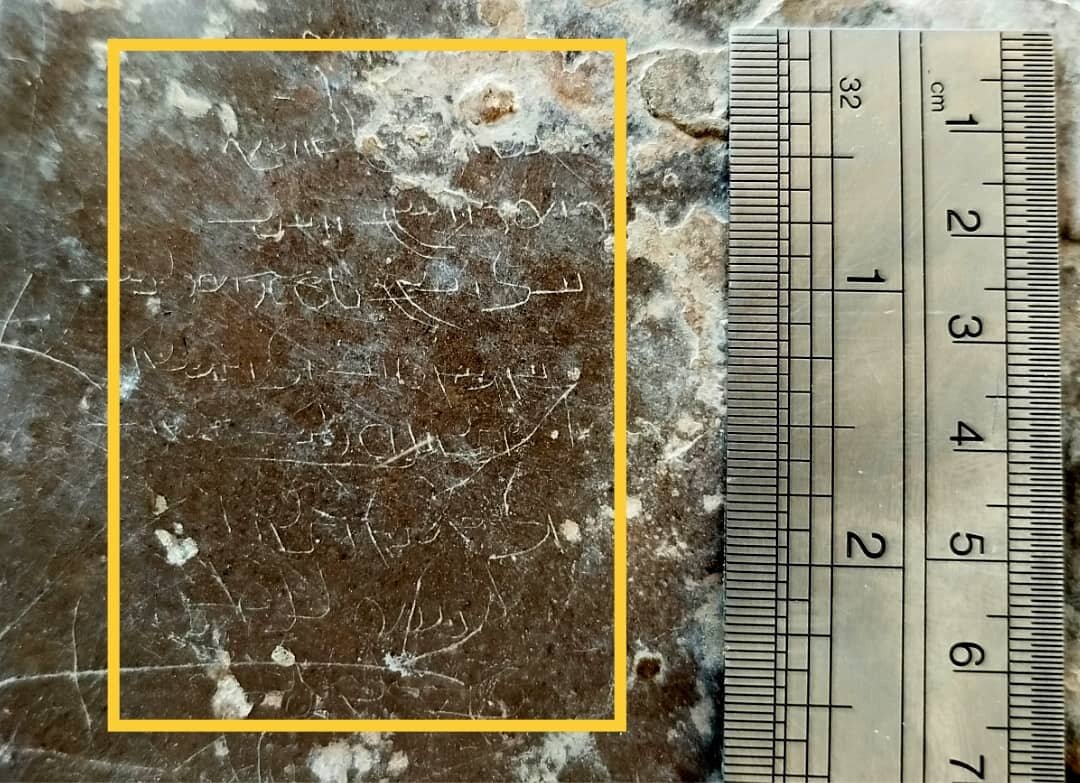‘World’s smallest’ ancient inscription discovered in southern Iran

TEHRAN – An Iranian historian has announced the discovery of what he says is the “world’s smallest known ancient inscription”, a 1,600-year-old text carved on a rock wall in Marvdasht, Fars province, dating to the late Sassanid period.
Abolhassan Atabaki, who holds a doctorate in history, said the inscription measures 4 by 7 centimeters, about the size of a matchbox, and was engraved with a tool just half a millimeter thick.
“This extraordinary find is one of the masterpieces of pure Iranian art from the Sassanid era,” Atabaki was quoted as saying by state media. “Such valuable discoveries in cultural heritage can become symbols of national identity and sources of attraction for tourism in the future.”
Najmeh Ebrahimi, another historian, said the text is written in nine lines using Pahlavi and Middle Persian scripts. The first two lines have been obscured by rock deposits. She said the inscription, believed to be composed by a resident of the ancient city of Istakhr, contains a religious text from the Sassanid period.
Ebrahimi added that Atabaki has studied and translated the inscription, which will soon be published in academic journals.
Earlier this year, Atabaki announced the discovery of another rare Sassanid-era inscription in the Marvdasht region of Fars province. That text condemned the breaking of promises.
The ancient city of Istakhr, near Persepolis in southern Iran, was once a royal residence of Sassanid kings and features the remains of palaces, temples and fortifications. Its political significance dates back to 224 CE, when Ardashir I overthrew Artabanus IV of the Parthian Empire to establish the Sassanid dynasty.
Today Istakhr is largely reduced to ruins, with scattered architectural fragments across a walled area measuring 1,400 by 650 meters. The site was once surrounded by a moat linked to a seasonal river.
Under the Sassanids, Iranian art and architecture flourished, with monumental palaces and cliff carvings at sites such as Bishapur, Naqsh-e Rostam and Naqsh-e Rajab.
AM
Leave a Comment